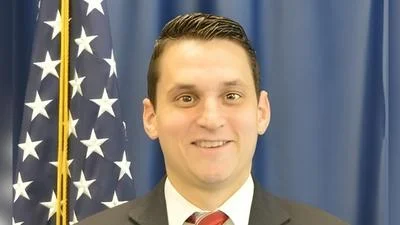The Congressional Record is a unique source of public documentation. It started in 1873, documenting nearly all the major and minor policies being discussed and debated.
“BREAST CANCER RESEARCH” mentioning the U.S. Dept. of Energy was published in the Senate section on pages S3717-S3718 on April 25, 1997.
The publication is reproduced in full below:
BREAST CANCER RESEARCH
Mr. D'AMATO. Mr. President, let me speak, if I might, to an issue of critical national importance--an issue that has plagued the people of the State of New York, most particularly those in Long Island. I am talking about Nassau and Suffolk County, the communities of Long Island. A major county is described legally as a county that has more than 250,000 women, for the purposes of compiling these statistics. And they are dreadful statistics because we are talking about the incidence of breast cancer. Long Island has had an unenviable position of being ranked No. 1 in the incidence rates of breast cancer in years gone by.
It is incredible. As a result, the National Institutes of Health has undertaken a very comprehensive study, one of the first of its kind, which says we will look to see what environmental factors may be contributing to these high rates of breast cancer. They are undertaking that study. Some $5 million has been allocated. Mr. President, that $5 million is not enough, even though it is among the most sophisticated studies being undertaken.
Recently, some very real questions have arisen as it relates to what impact there may be as it relates to radioactive materials, radio nuclides, and other materials that may have gained entry into the groundwater system, or that may, as a result of being dispersed in the air, some of these radioactive materials out in Brookhaven, Long Island. What impact has this had, if any?
Indeed, it seems to me, if we were to spend $5 million, that is not an inconsequential sum. But one of the most comprehensive studies undertaken--this is a study that will take over 5 years; not to complete this study, addressing all concerns, as it relates to the high rate of breast cancer on Long Island, would be wrong. The scientific community will not have completed its chore. And part of that is to be able to say to the public we have examined the situation.
Brookhaven National Lab--and it seems we may have an additional responsibility--has been run under the aegis of the Department of Energy. May I say here and now that it has been run abysmally as it relates to the impact of its operation on the community.
Over the years, there has been a litany of abuses of burying of waste materials, hazardous waste, of creating almost a dump site of indifference to the operation of this lab where, indeed, the water tables have been impacted and have actually had radioactive materials--
tritium--discharged; and the reports of leaks, and the reports of these discharges have been systematically withheld from the public. The lab has operated with an indifference to public health--``The public be damned'' attitude. I commend the Assistant Secretary for Energy, who has come in to look at what can be done to straighten this fiasco out. The scientists have been more concerned with the success of their project than they have in terms of what the operational impact is. You would think some of the world's leading scientists would know that to even pose a threat to contaminate the drinking water, the drinking supply system, is just unconscionable. Yet they have been there with total indifference.
So I mention this because there is a real reason why that study should be expanded. The NIH has done an outstanding job with the funds available. They have not had sufficient funds.
That is why it was last Wednesday I spoke to Senator Stevens, chairman of the Appropriations Committee. We are going to be undertaking a supplemental appropriations on this floor.
By gosh, let me tell you when we have disasters, we should take care of them. This is a disaster. We should see to it that there are the necessary funds. Not only on Long Island, but we have another facility in Seneca, NY. It is a small community with an incredibly high incidence of breast cancer.
Why do I mention Seneca? There is very direct Government responsibility because we operated a huge storage depot there for all kinds of materials, such as atomic, et cetera. Some of them are still classified and are stored there. It has one of the highest rates of breast cancer in the Nation. They should be included. The people of that community should have a comprehensive study.
I have requested of Senator Stevens consideration that we increase the NIH funding. We are not talking hundreds of millions. But we are asking, and I have asked him. Hopefully they will include some $15 million so that Long Island's study can be brought to a successful conclusion so that they can monitor the operation as it relates to whether radioactive materials have had any impact on the groundwater and in the incidence of breast cancer and to the health of Long Island.
So whether it be Seneca, or whether it be my colleagues who seek funding from other parts of the country, California, New Jersey, or wherever it might be, the State of Florida, where people would come and say, ``We want to know. Are there environmental factors that are contributing to the higher rates?'' We should be doing this.
I want to commend Senator Stevens for his looking at this. I hope that we will all be supportive.
So it is not a question of us appropriating money just so that we can do this for Long Island. I am concerned about that, and Seneca in upstate New York, but, indeed, the people of this Nation.
I can't think of a better allocation of resources than to use this to ascertain with definitiveness with the best science available so the communities can raise their children with a piece of mind that there are hazards that can be avoided and are identified.
I just leave you with one chilling statistic as it relates to the 3 million people who live in Nassau County and Suffolk County. More than half of them are women. Women who live on Long Island for more than 40 years are 70 percent more likely to come down with breast cancer than a woman of comparable age, et cetera, and background who lives there for 20 years. Why? That is why there are so many of us who think there are some very real environmental factors that must be considered.
So I hope that all of my colleagues could support this increase of
$15 million, which is a very modest sum, to expand the NIH; and, yes, to earmark for breast cancer research to ascertain what impact the environment may have in causing the higher incidence.
I thank the Chair. I thank my colleagues for being so generous in permitting me the opportunity of making this presentation in morning business.
I yield the floor.
Mr. DORGAN addressed the Chair.
The PRESIDING OFFICER. The Senator from North Dakota.
____________________








